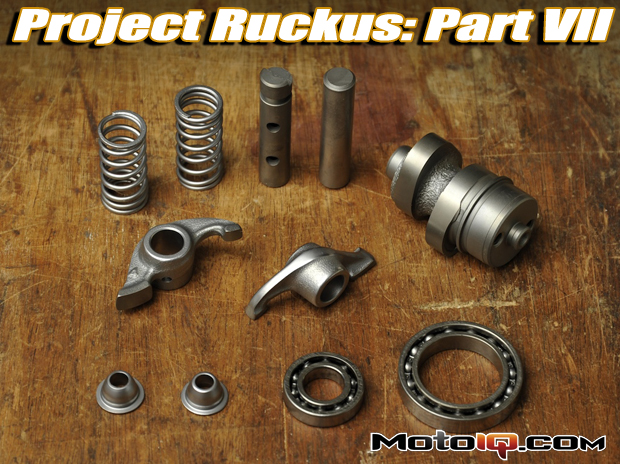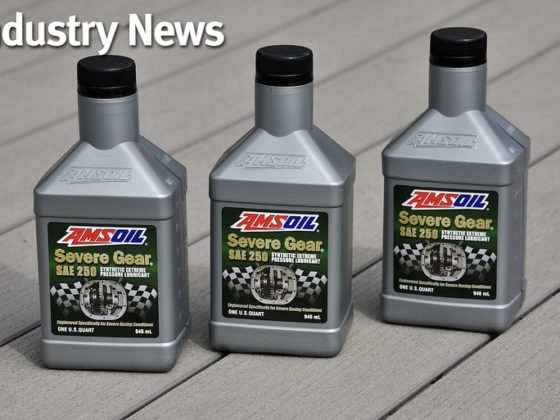,
 |
| To show how tiny the parts we are dealing with are, here is a quarter compared to our modded valves. DPR had to work with small tools and great precision to do the work from the porting to the valve job. |
We also did all of the other tricks done in our last engine, including our radius valve job, recontouring the valves and valve stems. Unlike our last motor, we did not quench weld our combustion chamber. This is a hard to do and expensive step that most people could not duplicate. Instead to raise our compression we milled our head by 0.015 inches. This gained us almost as much quench surface as welding and will also retard our cam timing by about 3 degrees which will gain us some top end power while probably costing us some bottom end. The milling leaves us with a compression ratio of 13.8:1 which is almost a half point higher than our old engine. Hopefully detonation on pump gas won't be a problem as we feel that our engine's small bore will resist detonation. We also went to a slightly more aggressive Web camshaft for this build.
 |
| We used Embee thermo barrier coating on the combustion chamber, exhaust port, valve faces and the backside of the exhaust valve to protect these parts from heat. Now the heat of combustion can be used to drive the piston instead of heating the water jackets of the cylinder head. |
 |
| We reduced the rocker arm reciprocating weight by 40% and lightened the valve spring retainers by 30%. This will give us some valve float headspace. The lightened rockers and retainers were polished to reduce stress risers and WPC treated to eliminate any areas where stress could start a fracture. The lustrous sheen is the result of WPC treatment. WPC was used on the entire valvetrain to reduce friction and improve life. The rocker arm bores, rocker shafts, retainers, valve springs and camshaft all are WPC treated. |
We made more extensive use of WPC Treatment in this build. WPC is the Japanese mirco blast surface treatment that greatly reduces wear and friction while increasing strength. We WPC treated our engine's entire valvetrain. Since we are going to be revving our engine to 10,500 rpm, 1600 more rpm than stock, we decided to lighten our valvetrain components to reduce chances of valve float. We had significantly lightened our rocker arms and valve retainers and WPC treated these parts to help strengthen them and eliminate any stress risers we may have created in them during the lightening process. We WPC treated our valve springs to improve their fatigue properties and applied the WPC process to our rocker shafts and valve guides to improve wear and reduce friction. We also WPC treated our valves, valve stems and valve seats as this will help them maintain a good seal for longer. We also gave the WPC treatment to our camshaft.
 |
| Our completed head with coating, ported intake manifold and Chanito thin head gasket. |




6 comments
Hello there. I’m trying to replicate your 58.1cc ruckus project. How has it lasted since completion? Is it still running well? Any issues?
It is still running well. It has sat for a few years and we just got it running again.
In other words, its not a daily driver, and just a show piece. If you want speed on your 50cc, sell it, and get a bigger bike/motor, and don’t sacrifice the reliability.
It is perfectly reliable. I rode it a lot, I just lost interest in it because our shop moved to where the drivers suck and I had to ride through some rough neighborhoods to get there so I didn’t feel safe riding it to and from work anymore. This made me lose interest in scooters.
Where did you end iup with top speed on this one?????
60 MPH